Which is better: photoepilation or laser hair removal?
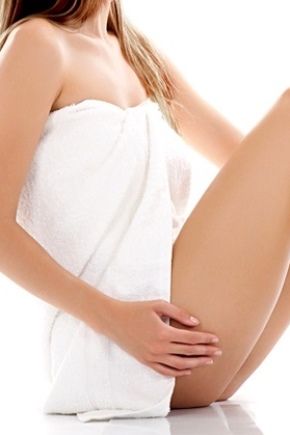
Smooth and velvety skin has always been the cherished dream of every woman. Today, the beauty market offers a lot of options for getting rid of unwanted vegetation on the body. The beauty industry has unique and radical epilation methods, one of the most modern is light radiation. We are talking about laser hair removal and photoepilation.
Peculiarities
There are two ways to get rid of hairs - this is epilation and depilation. Depilation includes methods of getting rid of hair that do not destroy the hair follicle, but simply remove it from the surface of the skin (shaving or a special depilatory cream). This method does not affect the further growth and development of the hair. Electrolysis is the intentional removal of hair from a skin area along with hair follicles, as well as the direct destruction of the hair follicle.

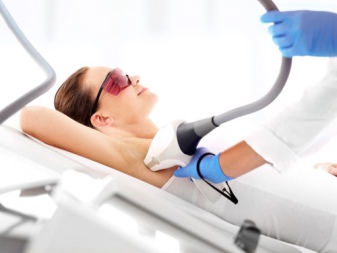
Both with photoepilation and laser hair removal, the effect is on the hair located on the surface of the epidermis, as well as on the hair follicle. In the main body and root of the hair is melanin - the pigment that colors the hair. Light radiation heats the pigment and the network of capillaries that feed the hair. The blood in the capillaries coagulates, and the melanin becomes discolored, in connection with this, the hair follicle dies.After a while, the hair falls out together with the root and no longer grows in this place.
laser
Laser hair removal is performed using a special device - a laser. Usually use alexandrite, aluminum garnet, diode or ruby beams. It all depends on the amount of pigment in the hairline. The darker the hair, the stronger the effect should be, as a rule, for very dark and coarse hair, a diode laser beam is used. Special settings for the device are not required, since most modern lasers have a melanin level scanner in the hair, which allows you to more accurately select the power of work without injuring the epithelium.
The length of the hair should be no more than 1-2 mm, so that the laser energy is spent on the deep pigment, and not the outer one, since the main body of the hair can be removed with a conventional razor.
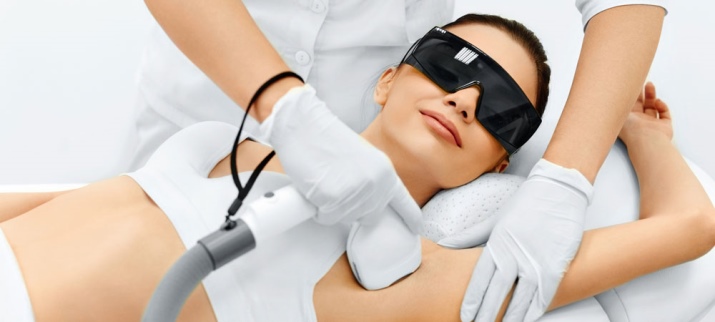
At the end of the procedure, it is necessary to apply a cold compress to the treated areas of the skin to prevent swelling and redness. After a few days, the hairs begin to fall out gradually. After the first session of laser hair removal, the effect lasts approximately 1.5 months. The duration of the effect depends on the individual characteristics of the hair and skin of the client. It is necessary to go through 4 to 8 sessions to achieve the ideal effect. The entire course takes approximately 1-1.5 years, sometimes up to 2 years.
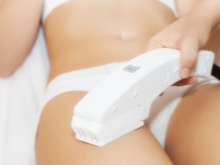
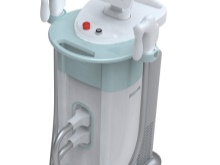
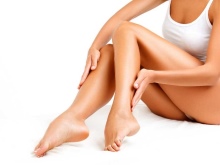
Laser hair removal is not recommended if there are the following number of features:
- skin chronic diseases (dermatitis, psoriasis, herpes);
- obvious skin defects (ulcers, tumors, wounds, burns);
- varicose veins, rosacea;
- skin that is badly tanned or burnt by the sun;
- the procedure is not performed during pregnancy or illness.
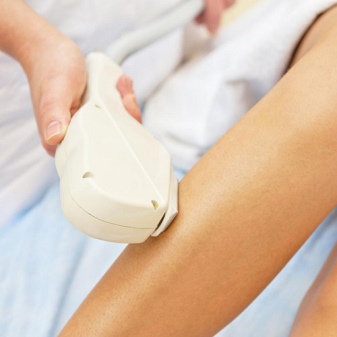
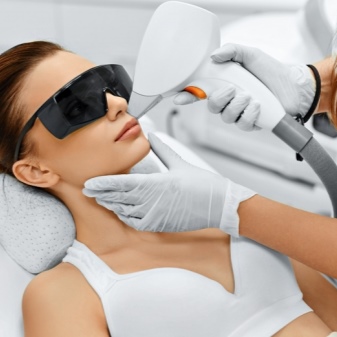
Contraindications and consequences:
- if the dermatologist is incompetent, burns may remain on the patient's skin;
- folliculitis (in cases where the patient's skin is prone to increased sweating or in the first days after the procedure, the client visited a sauna or bath);
- allergic skin rashes;
- exacerbation of chronic skin diseases (if the immune system is weak);
- if the beam accidentally hits the mucous membrane of the eye, conjunctivitis, temporary loss of vision, photophobia may occur;
- skin pigmentation (freckles, age spots) may increase;
- the appearance of gray hair;
- The laser flash can improve the blood supply to the hair growth area, which can promote vellus hair growth.

Advantages and disadvantages:
- laser exposure is safe and does not harm the skin in general;
- for a person with normal skin sensitivity, the process is completely painless, with any discomfort, anesthesia is provided;
- the removed hairline disappears for a long time;
- The procedure itself takes approximately 40-45 minutes, depending on the amount of work.
Photoepilation
Before starting the procedure, the client must wear special goggles so as not to burn the mucous membrane of the eyes. A special gel is applied to the surface of the skin, which will protect it from heat. Further, the photoepilator acts with thermal waves on the capillaries that feed the hair follicle, the blood coagulates and stops nourishing the hair. When exposed to heat, the hair is heated to 70-80 C, without nutrition, the hair disappears. There are times when the hairs are very hard and contain a lot of melanin, and after photoepilation, the hair follicle is not destroyed, but damaged, resulting in atrophy.
Over time, the hair decreases in thickness and becomes much lighter.At the end of the procedure, a softening preparation is applied to the body.

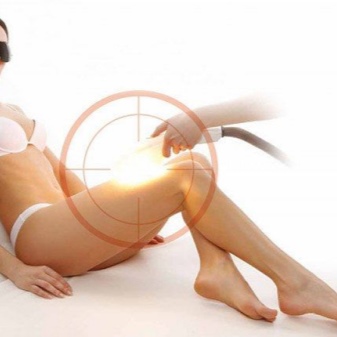
After the procedure, swelling and redness may occur on the skin. Pain may also occur. Painful effects will last depending on the intensity of exposure to the skin and hair in general. If the discomfort does not go away within a few hours, cold compresses or pain relievers should be used.
The second session of photoepilation should be carried out at least two weeks later. Subsequent procedures should be carried out at the rate of plus 2 weeks from the previous procedure (4 weeks, 6, 8 and so on weeks).
After the passage of three procedures, the difference is immediately noticeable - there is a stable dynamics of hair loss.


Advantages and disadvantages:
- this method allows you to remove hairs of any structure, with the exception of gray hairs without melanin, the device does not recognize them;
- skin treatment can be carried out in any areas, since the procedure is practically painless;
- damage to the skin is excluded, which means that infection is excluded;
- at the end of the full course of photoepilation, the hairs stop growing for 4-6 years;
- the light used for the procedure is similar in nature to the sun, which indicates the environmental friendliness of the process;
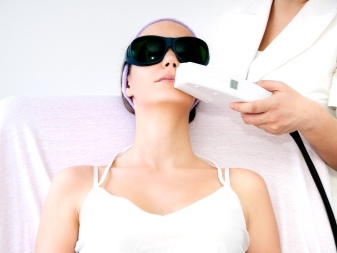
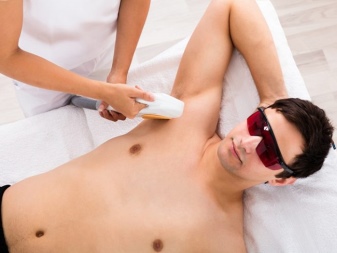
- the procedure lasts from 5 to 25 minutes;
- photoepilation promotes skin rejuvenation, under the action of light on the deep layer of the epidermis, collagen production begins, the skin becomes smoother (the process of photoepilation and photorejuvenation is similar in principle of action);
- the procedure should not be performed for eczema, lichen, ichthyosis and other skin diseases;
- photoepilation is not recommended for varicose veins.

Contraindications and consequences:
- if you treat dry, heavily tanned skin, in which there is a high content of melanin, you can get a skin burn;
- as with laser hair removal, folliculitis may occur;
- in younger patients with darker skin color, acne-like rashes may form;
- exacerbation of herpes infection on the skin; it is recommended to drink a course of antiviral drugs before a photoepilation session;
- people with skin prone to allergies may develop hives, accompanied by itching and burning;
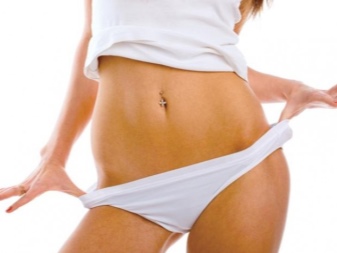

- neoplasms may appear if papillomas or moles have been subjected to intense light flux;
- paradoxical hypertrichosis can occur in areas of the body that were on the border with the treated skin; this manifests itself in increased hair growth due to insufficiently dense light flux and the hair follicle is not destroyed, but stimulated to grow;
- sometimes there is a violation of sweating, this can cause hyperhidrosis. This is explained by the fact that the light flux affects not only the hair follicle, but also the sweat glands inside the skin.
Differences
It may seem that photo and laser hair removal are absolutely the same in terms of the principle of action, but at the same time they have a number of fundamental differences:
- By way of influence. When carrying out laser hair removal, it is necessary to select the desired type of beam so as not to damage the skin. As mentioned earlier, it all depends on the color of the hairs, the type and color of the skin. In the case of photoepilation, various options for light radiation are possible. We can say that this type of hair removal is more versatile.
- The area of influence of the device. When processing unwanted vegetation with a laser, a smaller area of \u200b\u200bthe skin is captured, which makes the procedure longer, unlike photoepilation.
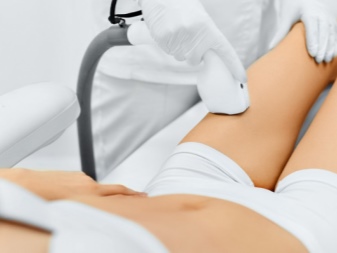

- Number of sessions. Laser hair removal achieves the goal faster, with photoepilation it takes more time to achieve the final result - perfect skin.
- Price. Services of laser and photoepilation in the beauty market cost a lot, but laser hair removal will be cheaper by about 2 times.
What to look for when choosing a salon?
It is necessary to understand that laser hair removal and photo-epilation are serious procedures that differ from each other and require professionalism and a high level of skill from the cosmetologist so as not to harm the client's skin. Before agreeing to a procedure in a beauty salon, you need, first of all, to read reviews about this salon, and during your initial visit and consultation, pay attention to the following points:
- Interior cleanliness and workplace of a beautician;
- Availability of proper equipment. Like tanning lamps, the photoepilator has a finite number of permissible flashes. If the equipment is old, then the procedure is unlikely to benefit you, and the skin will become perfectly smooth. The older the device, the less effective it will be, in connection with this, more visits are needed and, as a rule, money for a good result.
- Master qualification. Do not be afraid to ask about the certificates and skill level of the beautician, as his skills directly affect the result of hair removal.
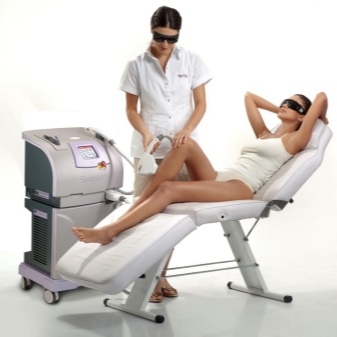

Before the procedure, the master should clarify the following with you:
- The skin phototype must be determined, otherwise, due to the wrong choice of settings on the equipment, there may be sad consequences (burns or no result).
- The master must find out about the presence of skin diseases of the client, usually in this case, cosmetologists send for examination to an endocrinologist.
- The client must be given special goggles, regardless of the epilation area. Even if leg hair removal is done, the client's eyes should still be protected.
- Before the session, a full briefing of the client should be carried out. Also, the master must give a complete list of skin care products of a certain type.



If a woman suffers from an increased level of hair in the area of the chin, upper lip, the beautician should find out the reasons for such an anomaly at the initial examination. Usually this problem is associated with hormonal imbalance. In this case, the specialist may recommend combining laser hair treatment with photoepilation and parallel treatment by an endocrinologist.
In other cases, it is not recommended to combine procedures, as there is a high risk of skin damage.
What to choose?
Comparisons of photoepilation and laser hair removal show that it is difficult to make an unambiguous choice in favor of one or the other method. When choosing, you must be guided by your individual characteristics of the skin. Also in this matter it is necessary to consult a dermatologist, he will more accurately characterize the condition of the skin. Both types of hair removal are effective and after 2-3 appointments in the cosmetologist's office you can feel and see the result - beautiful, smooth and well-groomed skin for a long time.



In the video below, the blogger answers the most important questions regarding laser hair removal.




























